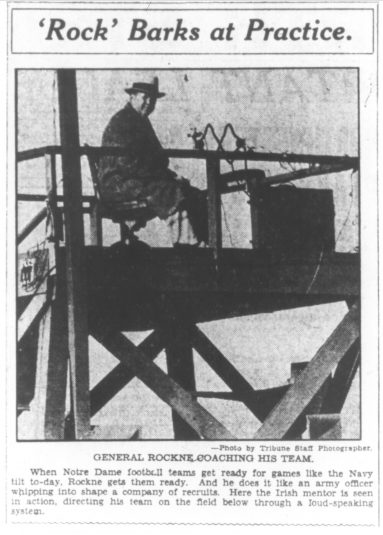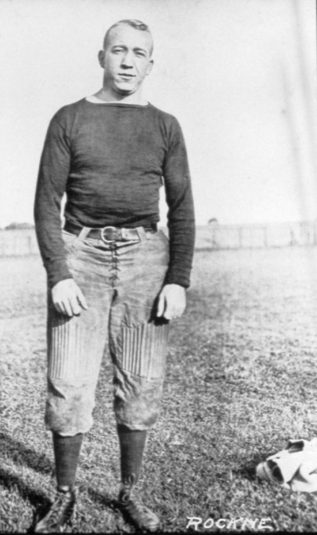Electro-Voice Marks 90 Years, Recalls the First Sports-Venue PA System
Knute Rockne gave us not only the forward pass but also a way to hear about it
Story Highlights
Sound systems in sports venues have become critical to fan engagement and ticket sales, not to mention letting everyone know what’s happening on the field and what a player’s favorite song might be. As music continues to become a bigger part of all sports, the choices around sound systems — from the amplifier in a closet to the acoustical treatment covering structural elements — have become part of the basics of sports venues.
 That wasn’t on the mind of Knute Rockne, the legendary coach of the University of Notre Dame’s Fighting Irish football team, which, during his tenure from 1918 to 1930, logged 105 victories, 12 losses, five ties, and three national championships, including five undefeated seasons without a tie.
That wasn’t on the mind of Knute Rockne, the legendary coach of the University of Notre Dame’s Fighting Irish football team, which, during his tenure from 1918 to 1930, logged 105 victories, 12 losses, five ties, and three national championships, including five undefeated seasons without a tie.
Less well known than his record is Rockne’s connection to stadium sound. After an illness sidelined the then 42-year-old coach, he was able to supervise team training sessions ahead of the 1930 season from a specially constructed tower that overlooked several adjacent practice fields on the college campus. To make himself heard by players on the fields, Rockne used what might be regarded as the first PA system ever purposefully installed on a sports field.
Two South Bend, IN, engineers, Lou Burroughs and Albert R. Kahn, had just shuttered their flailing, three-year-old radio-repair business and transitioned to making audio products. Their fledgling company got an early boost when Rockne signed a contract for them to deliver a PA system —speakers, an amplifier, microphone — for his use from the tower. The portable PA was the company’s first product, and Rockne was so tickled he dubbed it “my electric voice.” The moniker was quickly translated into Electro-Voice, which celebrates its 90th anniversary this year.
PA systems were still a novelty at the time. They can trace their lineage to 1898, when Oliver Lodge invented the first true moving-coil loudspeaker. The first recorded incident of an electric PA system being used to amplify speech and music at a public event was on Dec. 24, 1915, at San Francisco City Hall, by Magnavox founders Edwin Jensen and Peter Pridham for a Christmas-carol concert with an address by the mayor. The amplifier was reportedly a mere 10 W, but the loudspeaker was able to project sufficient coverage for the crowd of 100,000 to hear.
In 1925, engineers at General Electric and Bell Labs filed papers and patents on the basic principle of the modern direct-radiator loudspeaker: a small coil-driven mass-controlled diaphragm in a baffle with a broad mid-frequency range of uniform response.
When Burroughs and Kahn began their business, most microphones on the market were of poor quality and were relatively expensive. Sensing an additional opportunity, the new company purchased a lathe and drill press and began making microphones at the rate of one a week. By 1933, the company was out of debt. By 1936, 20 people were employed, and E-V was making significant contributions to the industry. Since then, E-V sound systems have made their way into every sport on every continent, including in nine out of 10 stadiums at the 2010 FIFA World Cup in South Africa and, most recently, in the newly completed Hard Rock Stadium, the new home of the Miami Dolphins.
Rockne, alas, didn’t fare as well. He died in a plane crash less than a year later, on March 31, 1931. However, he may have made one more contribution to sports media, albeit unintended: his funeral was broadcast live on network radio from South Bend across the U.S. and in Europe as well as to parts of South America and Asia. Even in death, Rockne helped put sports and broadcast audio together.

